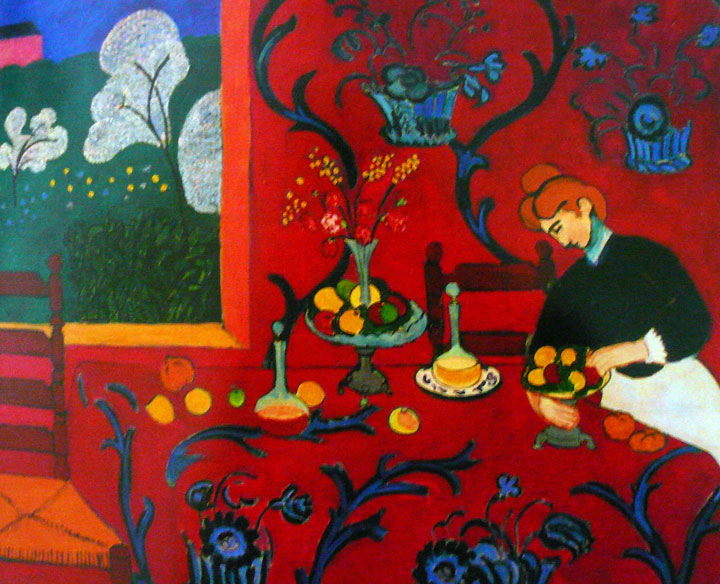- Relief printing
- Intaglio and planographic printing
- Color printing
- Bits and pieces
- Early photography in silver
- Non-silver processes
- Modern photography
- Color notes
- Color photography
- Photography in ink: relief and intaglio printing
- Photography in ink: planographic printing
- Digital processes
- Where do we go from here?
Primary colors

Oil on canvas. Henri Matisse. Red Room (Harmony in Red). 1908. 70 7/8 x 86 5/8" (180.5 x 221 cm). State Hermitage Museum, St. Petersburg ©Succession H. Matisse, Paris / Artists Rights Society (ARS), New York.
Red, yellow, and blue are a perfectly appropriate set of colors for the painter to think of as primary in work in that medium, but as we engage the modern technologies of color photography and digital display, we must dig deeper and try to understand just what the term “primary color” might mean. For the painter the term “primary” refers to a color that stands by itself as a visual entity, instead of being generated by mixing other colors. We know today that a pure magenta can be mixed with yellow to produce red, but in the past, painters used earth-based pigments that were never so pure as to produce good color when mixed. When we paint we are dealing with a form of color called “subtractive” color. Most painting entails the assumption that the support is light in value (often the white of gesso, applied to the canvas as a primer, or of bright paper) and that the paints “subtract” particular colors from this whiteness by absorbing light as it passes through them.
This is true when the paint is transparent, such as watercolor, and even to some extent when the paint is relatively opaque, like oil, which can be applied with some degree of transparency. As printing technologies developed and attempts were made to print in color, it became obvious that the subtractive principle could be used, and that transparent inks in a limited number of colors, applied overlying each other, could produce many additional colors not present in the actual ink set. This interesting fact lies at the foundation of all modern color printing, whether in ink on presses or in the traditional materials of color photography in the darkroom.

